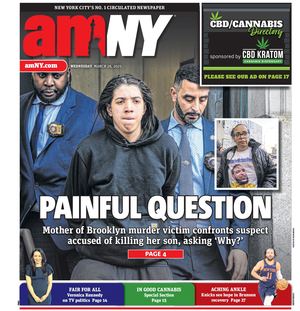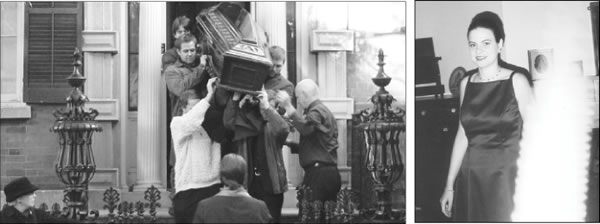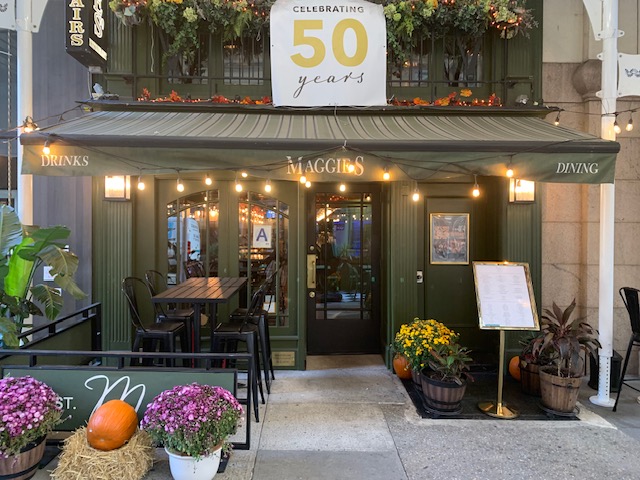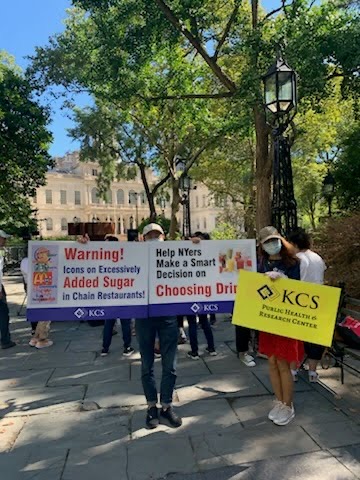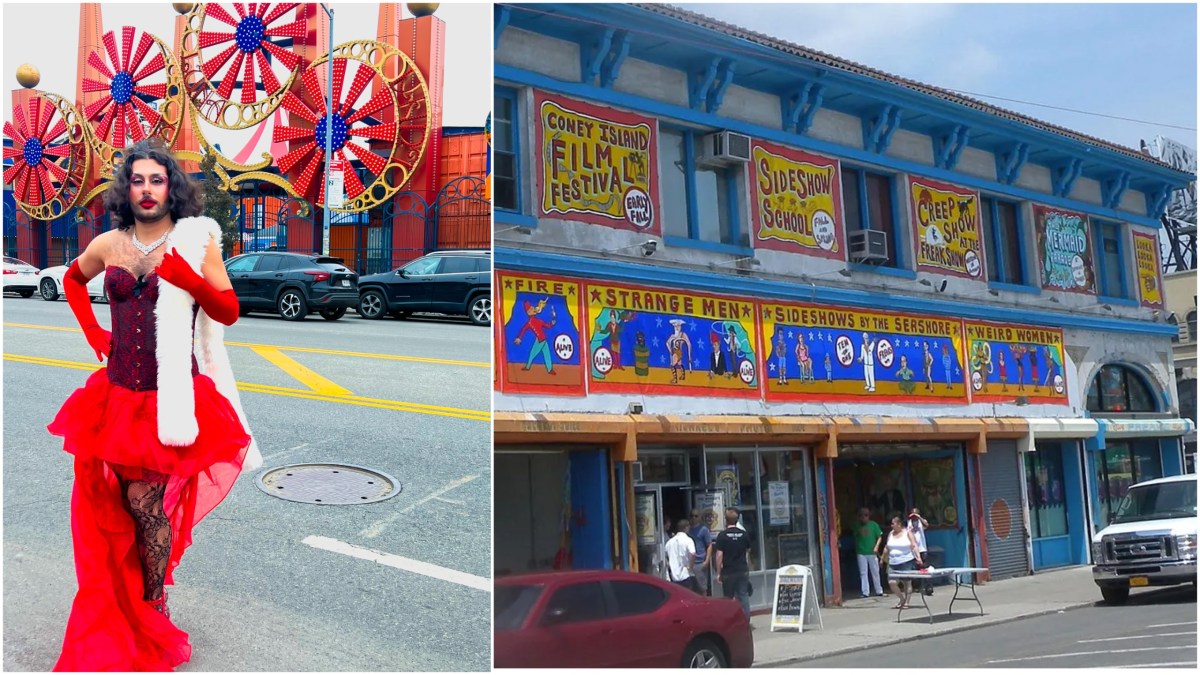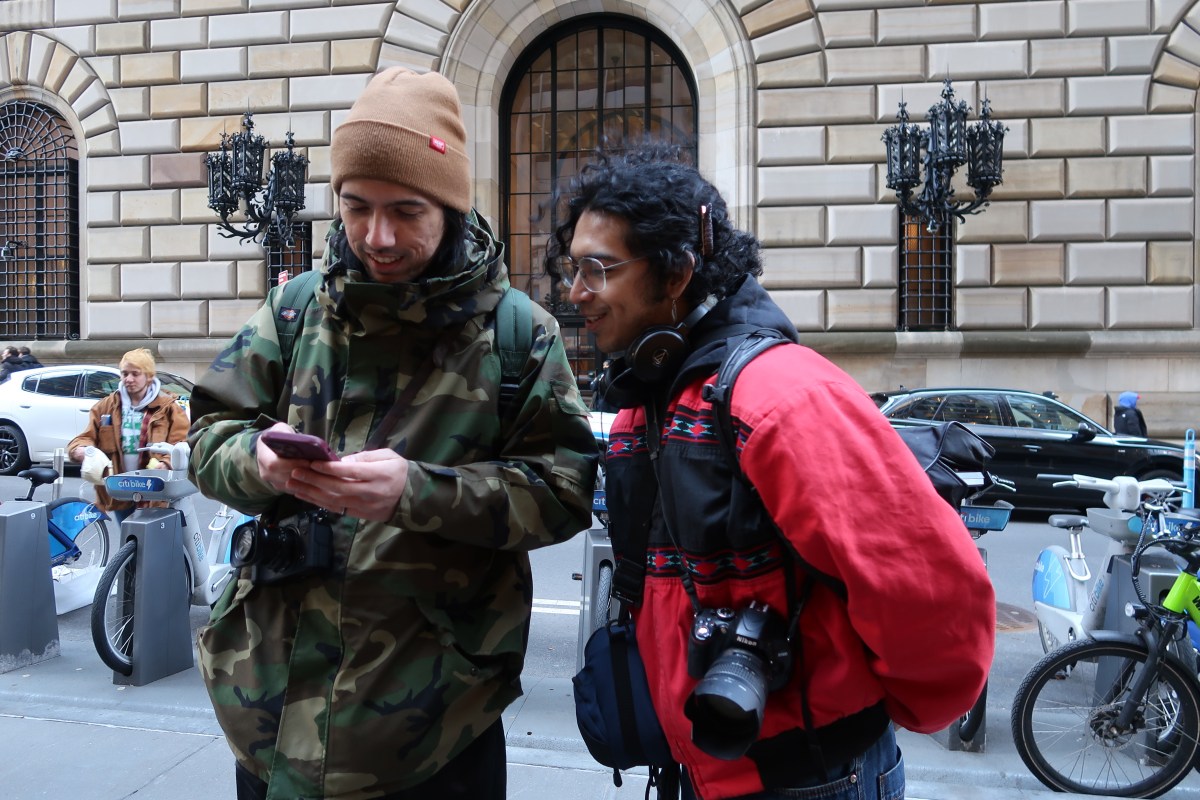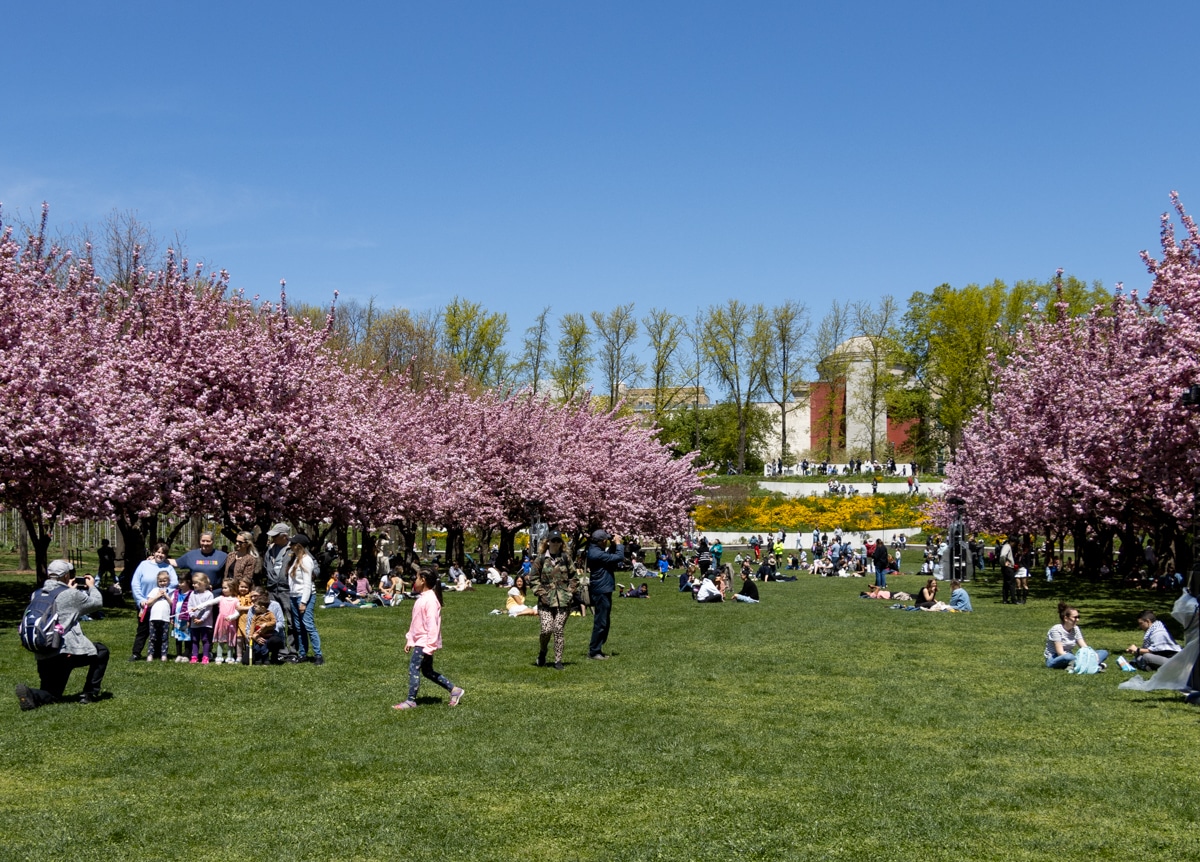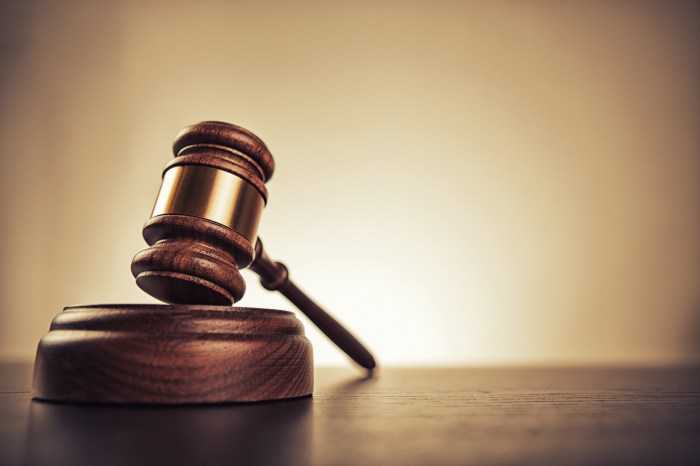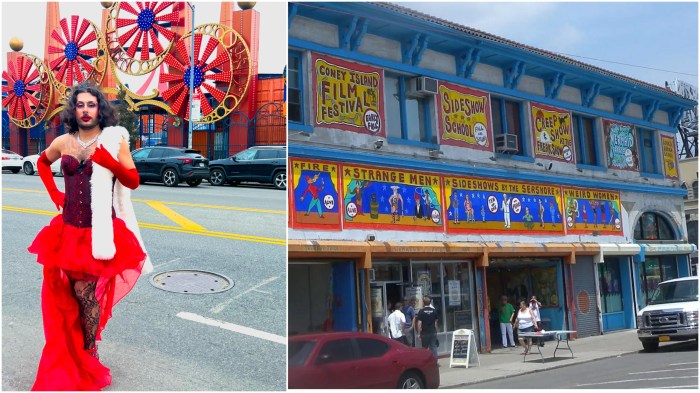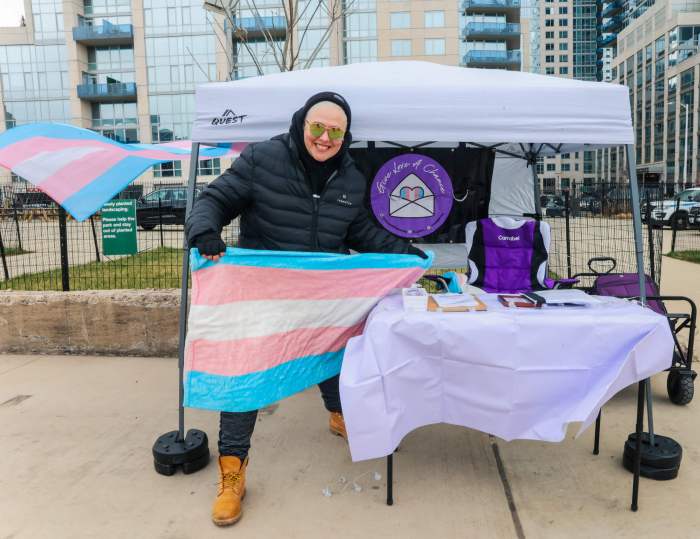BY SCOTT STIFFLER
A skeptical reporter, hot on the heels of a sensational exclusive, accompanies a team of ghost hunters as they investigate a spooky old house that’s been the site of numerous encounters with apparitions, floating orbs and flying objects.
It’s the kind of Hollywood scenario you’d shrug off as toothless and clichéd — until it’s actually happening to you. When that moment arrives, all you can think of is the fact that this sort of thing almost always involves blood and gore and inconvenient dismemberment — and considerably fewer people exiting the house the next morning than went in the night before.
That’s the last thing I remember thinking before walking into “Manhattan’s most haunted house” — the Merchant’s House Museum (29 E. 4th St.). It was 10 p.m. sharp on the dark, albeit not stormy, night of Oct. 1, 2010. I had been invited by Education & Communications Manager Eva Ulz to accompany the thoroughly vetted, Board of Directors-approved paranormal researcher Dan Sturges as he conducted his eleventh investigation at the Merchant’s House (having emerged with “credible data” during seven of his ten previous visits).
HISTORY OF THE HOUSE
There’s no doubt about it. As haunted houses go, the Merchant’s House Museum is the real deal. Built in 1832, it was occupied for nearly a century by a prominent merchant family led by patriarch Seabury Tredwell (1780-1865). Daughter Gertrude (1840-1933) was born, and died, in the house. It opened as a museum in 1936.
Barely a year after Gertrude’s death, a restoration worker saw “a small elderly woman in a light-colored dress standing in the doorway” — who promptly vanished. Soon after, noisy children playing outside the house were interrupted “when the door burst open and a tiny elderly woman flew out onto the high stoop in a rage, waving her arms wildly. Neighbors who witnessed the event swore the description matched Gertrude to a T.”
Since then, the ghost or spirit or image or event loop or living memory of Gertrude has been spotted many times — sometimes as a young woman, but most often as an elderly one (usually on the main staircase, in the front bedroom where she died, or “hovering within view of the front door”). In the early 1980s, tourists rang the bell for entry and the door was opened by a woman in period clothing who told them the museum was closed for the day. It wasn’t — and the MHM tour guides don’t wear period clothing. Apart from her “Get off my yard, you noisy kids” 1934 smackdown, Gertrude seems to be a friendly observer — unlike the less frequent but more menacing appearances by her father.
Then there are the multiple reports of unexplained cold spots, disembodied footsteps, recitals from a piano that no longer functioned, computers that freeze when you begin to type “Tredwell” and recordings which seem to contain words and phrases which answer specific questions.
Board of Directors member Anthony Bellov (whose booklet “Some Say They Never Left” is quoted in the above paragraph — and available for sale in the tastefully-stocked gift shop!) says the activity has been more playful than ominous in recent years — recalling a distinct turning point when a psychic assured the spirits that furniture being removed for renovation efforts was in the best interest of the house.
Twenty years ago, the sheer amount of events experienced by credible witnesses reached a tipping point which compelled the staid historians who lovingly oversee the MHM’s faithful rendering of life as it was lived from 1835-1865 to publicly acknowledge — and begin formally documenting — reports from staff, volunteers and visitors.
Admirably, they’ve resisted the temptation to turn the MHM into a year-round “Spooky World”-type tourist trap. If it were my house, I’d be selling expensive supernatural-themed T-shirts and blaring the theme from “Ghostbusters” 24-7. But to their credit, this nonprofit entity has never stooped to that level. Whatever’s going on here is treated with respect.
That being said, it’s equally important to note that for a two-week period every Oct., they do play up their well-deserved reputation by conducting an annual “Ghost Tour” — during which visitors have reported a variety of odd occurrences (including complaints of cold spots, fainting preceeded by accounts of “being touched” and separate reports of a woman’s singing voice coming from an empty room).
THE INVESTIGATION
For the past three years, Dan Sturges (www.sturgesparanormal.com) and investigative partner Dan Tisher have been gathering electronic and photographic evidence at MHM. On the night I attended, Tisher was absent — and Anthony Bellov was our appointed chaperone. Bellov began his stint at the Merchant’s House as a college-age volunteer, and now is the Board Member in charge of cataloging strange occurrences and overseeing Sturges’s ongoing investigation. He’s got years’ worth of ghostly anecdotes and personal encounters and seems genuinely comfortable with what’s going on in the house.
But I could have done very nicely, thank you, without the creepy-in-this-context music that Bellov let play throughout the night (from their current exhibition, “Memento Mori: The Birth & Resurrection of Postmortem Photography”). It certainly set a tone. But seriously — he could have just saved us all some time by nixing the music, placing axes throughout the house and painting a bull’s eye on my back. He’s since assured me it wasn’t an intentional effort to summon the dead, he just likes the music. It actually seems to relax him. I find that harder to believe than the assertion that the place is haunted. As for me, I swear, I’ve still got goose bumps.
That would be my second set. The first, I experienced at 12:33 a.m. — as we were all standing in the rear parlor on the first floor. I very suddenly got goose bumps up and down my right arm and felt a tingling on that side of my body. Then something seemed to brush up against my face (which, atypically, had a few weeks’ worth of beard growth at the time).
I was genuinely freaked out — and would have happily traded my right side tingle for a left side one that could be explained away as the warning sign of an impending stroke. But no dice. It was the right side, and it was definitely happening. After debating whether to say something, I shared this observation with Bellov and Sturges. Neither of these veterans seemed particularly impressed, and I tried not to show my disappointment (or go with my instincts and run screaming from the premises never to return).
Get a grip, I told myself. You’re a crackerjack reporter with a story to file — and if the night ends here, you’ll never get reimbursed for the cab ride over or the delicious slice of pie you had at the Good Stuff Diner just in case it was your last meal. Electronic recordings of that particular moment, by the way, yielded no evidence whatsoever of anything happening, other than some nervous Nellie’s lack of experience with a scratchy beard.
As for why Sturges reacted so calmly, credit the fact that he’s not only an experienced paranormal investigator, but also a powerlifter who’s won benchpressing competitions. He doesn’t use his size to intimidate, though. Instead, he projects a calm, rational demeanor — just the kind of guy you’d want to have your back in a bar fight. As reassuring as that is, I couldn’t stop thinking that all the bulk in Manhattan, even if it’s on my side, wasn’t going to help when it came to encounters with transparent apparitions.
Still, there’s something to be said for doing this kind of thing with people like Bellov and Sturges, both of whom seem thoroughly grounded in reality. Case in point? After 70-plus investigations of private homes and historical locations, Sturges refuses to jump the fence for dramatic effect and say, definitively, that he believes in ghosts (or even that he’s actually seen one).
This comes from a guy who casually tosses off his laundry list of close encounters: “I have witnessed poltergeist phenomena. I’ve seen things drop out of ceilings out of nowhere. At Merchant’s House, I have heard footsteps. I’ve been in the room where psychic Richard Schoeller has been communicating with a spirit. But I haven’t ever seen one.”
What’s more, when posing questions to the dead, he doesn’t do it in an ominous tone or direct his questions upwards into the eternal ether or converse loudly and slowly as if the ghosts were hard of hearing or spoke English as a second language.
He also conducts his investigations with the lights on — passing entirely, thank you, on the corny night vision cameras and goggles (used for pure dramatic effect, he says, by the cheesy crop of ghost hunters that clog our modern cable TV landscape).
Supposedly, things that fall into the paranormal realm don’t care if the lights are on or off. But Sturges does: “You need light to see things. Most reports of paranormal activity happen during the day — and the reports at Merchant’s House, for the most part, are of things that have happened with the lights on.”
We proceeded through the house, lights on, from 10 p.m. to just before 2 a.m. — all the while, using, tri-field natural EMF (electromagnetic field) meters that measure changes in natural electromagnetic fields and filter out all man-made magnetic fields (anything with an AC current). We were also using digital audio recorders to capture EVP (electronic voice phenomenon) — and a Sony Handicam connected to a portable DVR system was placed in Eliza Tredwell’s room and left on for the duration.
CONCLUSIONS?
Despite my growing confidence that I’d had an encounter with a spirit with a thing for beards, nobody in the house that night saw or heard a thing. Now it was time for Sturges to find out if the sensitive electronic equipment had recorded anything. To do this kind of work, you have to be either extremely patient and dedicated or a very big fan of films like “Empire” (Warhol’s eight-hour epic of continuous real-time footage of the Empire State Building). Up to the task, Sturges recalls, “I’ve watched a door for four hours on a video.” Spoiler alert: The door didn’t even have the courtesy to move so much as an inch.
What he did find, quite unexpectedly, was something seemingly uttered in response to a question. This occurred in the fourth-floor servants’ quarters about four minutes into the investigation. Sturges said, “It sounded like a phrase, but I can’t pull out what it’s saying. I sent it to a forensic fellow I know who specializes in voice analysis, and he says it definitely falls within the human voice range. But he can’t clean it up enough to decipher what’s being said.”
Also recorded was an apparent sound of bells (in response to a question about Seabury’s fondest memory). Although four digital audio recording devices were in use that moment, only the one I was carrying picked this up.
When I first heard that, I was filled with enormous pride. Why, the dead chose to speak to ME! Ever since, I’ve been plotting my newfound career as a conduit to the other world and have been mentally spending the riches that’ll surely come my way when Hollywood buys my story. As for Sturges, he says there’s only one acceptable scenario by which he’ll reach a satisfactory conclusion: “Until Gertrude or Mr. Tredwell or one of the servants sits down with me and answers all my questions about what’s happening, I don’t know that there is an end game. Until then, I just keep asking.”
The Merchant’s House Museum is located at 29 E. 4th St. (btw. Lafayette & Bowery). Open Thurs. through Mon., 12 p.m. to 5 p.m. Admission is $10, $5 seniors & students. Call 212-777-1089 or visit www.merchantshouse.org. Want to hear accounts of ghost sightings? Call 877-MHN-1832.
